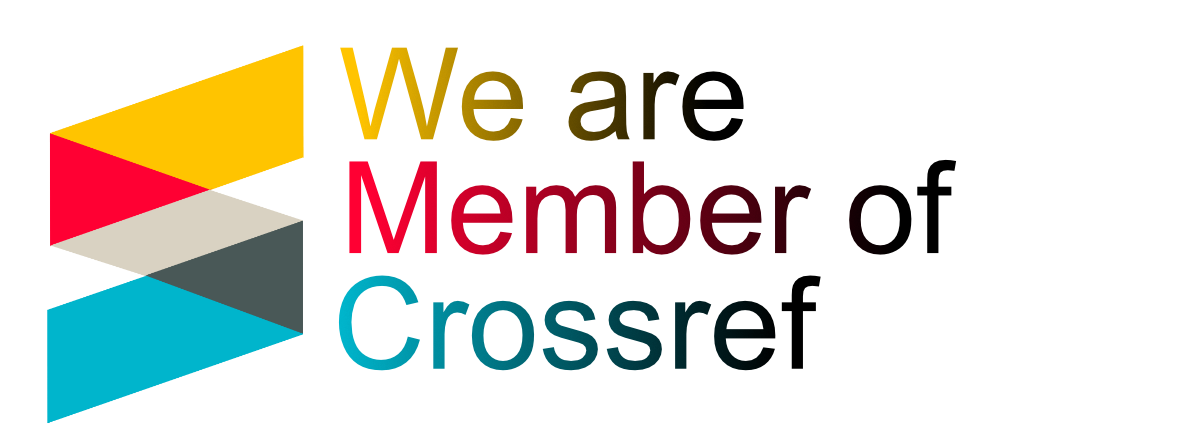Strategi Meningkatkan Kerjasama Tim
DOI:
https://doi.org/10.56721/prosalif.v2.2023.44Keywords:
Teamwork, Transformational Leadership, Work MotivationAbstract
Teamwork in an organization is fundamental in an era that continues to change radically. Of course, this is a challenge for any organization because employees who can work well with the team that has been formed can be a competitive advantage for the organization. This research was conducted to determine the strategy in forming teamwork in an organization. The method used in this study is a quantitative method with the PLS-SEM approach. This research was conducted at PT. Indah Kiat Pulp & Paper Product Tbk in the QC section. The data collection method is by questionnaire and using the SmartPLS version 4 analysis tool. The results show that transformational leadership and work motivation partially positively and significantly affect teamwork.
References
Alhamidi, E. M. A. (2022). Peran kepemimpinan transformasional dalam meningkatkan kinerja karyawan. Jurnal Integrasi Sumber Daya Manusia, 1(1), 52–62. https://doi.org/10.56721/jisdm.v1i1.69
Bass, B. M. (1985). Leadership and performance beyond expectations. Free press New York.
Burns, J. M. (2012). Leadership. Open Road Media.
Chaidir, J. (2022). Management of Village Funds for Development in Serang District (Case Study in Teluk Terate Village). PINISI Discretion Review, 5(2), 417–426.
Cinnioğlu, H. (2020). A Review of Modern Leadership Styles in Perspective of Industry 4.01. In Agile Business Leadership Methods for Industry 4.0 (pp. 1–23). Emerald Publishing Limited. https://doi.org/10.1108/978-1-80043-380-920201002
Haerofiatna. (2021). Pengaruh Kompetensi dan Iklim Organisasi terhadap Kinerja Dosen Universitas Primagraha. JIIP-Jurnal Ilmiah Ilmu Pendidikan, 4(4), 309–317. https://doi.org/10.54371/jiip.v4i4.275
Haerofiatna, H., & Chaidir, J. (2023a). Regional Regulations: Implementation of Electronic-based Government System. European Journal of Business and Innovation Research, 11(3), 61–69.
Haerofiatna, H., & Chaidir, J. (2023b). Smart City Master Plan for the Government of Serang Regency. Global Journal of Human Resource Management, 11(3), 1–11.
Hair, J. F., Hult, G. T. M., Ringle, C. M., & Sarstedt, M. (2017). A Primer on Partial Least Squares Structural Equation Modeling (PLS-SEM) (2nd ed.). SAGE Publications.
Hair, J. F., Risher, J. J., Sarstedt, M., & Ringle, C. M. (2019). When to use and how to report the results of PLS-SEM. European Business Review, 31(1), 2–24. https://doi.org/10.1108/EBR-11-2018-0203
Kania, D., & Mudayat, M. (2022). Kinerja karyawan hotel bintang 4 dan bintang 5 di Bandung Raya. Jurnal Integrasi Sumber Daya Manusia, 1(1), 1–20. https://doi.org/10.56721/jisdm.v1i1.33
Klein, G. (2023). Transformational and transactional leadership, organizational support and environmental competition intensity as antecedents of intrapreneurial behaviors. European Research on Management and Business Economics, 29(2), 100215. https://doi.org/10.1016/j.iedeen.2023.100215
Li, W., Bhutto, T. A., Xuhui, W., Maitlo, Q., Zafar, A. U., & Ahmed Bhutto, N. (2020). Unlocking employees’ green creativity: The effects of green transformational leadership, green intrinsic, and extrinsic motivation. Journal of Cleaner Production, 255, 120229. https://doi.org/10.1016/j.jclepro.2020.120229
Lin, Q. (2023). Transformational leadership and innovative work behavior: The role of identification, voice and innovation climate. International Journal of Hospitality Management, 113, 103521. https://doi.org/10.1016/j.ijhm.2023.103521
Locke, E. A., & Schattke, K. (2019). Intrinsic and extrinsic motivation: Time for expansion and clarification. Motivation Science, 5(4), 277–290. https://doi.org/10.1037/mot0000116
Nasir, A., Zakaria, N., & Zien Yusoff, R. (2022). The influence of transformational leadership on organizational sustainability in the context of industry 4.0: Mediating role of innovative performance. Cogent Business & Management, 9(1). https://doi.org/10.1080/23311975.2022.2105575
Ryan, R. M., & Deci, E. L. (2020). Intrinsic and extrinsic motivation from a self-determination theory perspective: Definitions, theory, practices, and future directions. Contemporary Educational Psychology, 61, 101860. https://doi.org/10.1016/j.cedpsych.2020.101860
Sansone, C., & Tang, Y. (2021). Intrinsic and extrinsic motivation and self-determination theory. Motivation Science, 7(2), 113–114. https://doi.org/10.1037/mot0000234
Van den Broeck, A., Howard, J. L., Van Vaerenbergh, Y., Leroy, H., & Gagné, M. (2021). Beyond intrinsic and extrinsic motivation: A meta-analysis on self-determination theory’s multidimensional conceptualization of work motivation. Organizational Psychology Review, 11(3), 240–273. https://doi.org/10.1177/20413866211006173
Van Dun, D., & Kumar, M. (2021). Enablers of Industry 4.0 Technology Adoption: Transformational Leadership and Emotional Intelligence. Academy of Management Proceedings, 2021(1), 13696.
Wahyudi, W., Rozi, A., & Putry, M. (2022). Kompetensi dan kinerja karyawan: Peran moderasi iklim organisasional. Jurnal Manajemen Maranatha, 21(2), 165–176. https://doi.org/10.28932/jmm.v21i2.4671
Downloads
Published
How to Cite
Issue
Section
License
Copyright (c) 2023 Bayu Astapati Rahayu, Achmad Irfan Hadiyana

This work is licensed under a Creative Commons Attribution 4.0 International License.
















